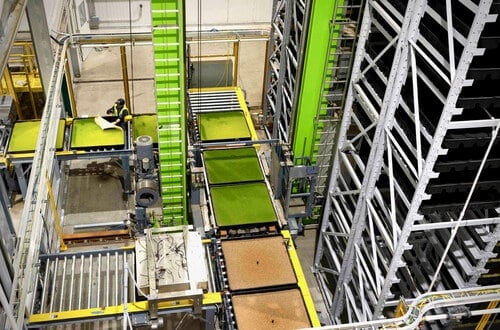Key Takeaways:
- JR Automation invests more than $4 million in Forever Feed Technologies
- Eight FFT Grow Systems™ to be deployed, each producing up to 50 tons of sprouted grain daily
- First commercial-scale system began operating in Hanford, California in October 2024
- Systems designed to reduce water use by 95% compared to field-grown alfalfa
Forever Feed Technologies Expands Indoor Feed Production
Forever Feed Technologies (FFT) announced that JR Automation (JRA) has made a $4 million strategic investment to fund eight FFT Grow Systems™, with key components ordered in the fourth quarter of 2025. Each system is designed to produce up to 50 tons of ForeverFeed™ sprouted grain daily, reducing water use by 95% compared to traditional alfalfa production.
The company’s first FFT Grow System™, located at River Ranch Dairy in Hanford, California, began operating in October 2024 and is considered the first commercial-scale indoor system of its kind.
Partnership with JR Automation
JR Automation collaborated with Forever Feed Technologies to design and build the FFT Grow System™, integrating proprietary growing protocols with advanced automation and digital technologies. The system is patented and capable of providing feed for more than 2,500 dairy or beef animals.
“This investment reflects Hitachi's deep commitment to environmental stewardship and sustainable innovation,” said Dave DeGraaf, CEO of JR Automation and General Manager of Hitachi's Automation Division.
Industry Impact and Sustainability Goals
The FFT Grow System™ is positioned as a resource-saving alternative for livestock operators. In many areas, a single system can replace up to 700 acres of field-grown feed while reducing fuel use, transportation needs, and emissions.
Jack de Jong, CEO of Forever Feed Technologies and owner of River Ranch Farms, noted that trial groups of dairy cows fed with ForeverFeed™ sprouted grain have shown improved feed efficiency. According to the company, this suggests the potential for stable or increased milk production with less feed.
Construction of additional full-scale systems is expected to begin in 2025, supporting broader adoption across large dairies and beef operations.



1 Comment